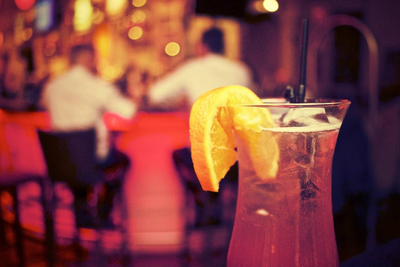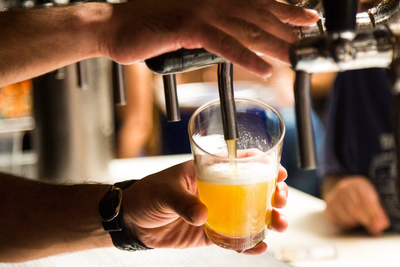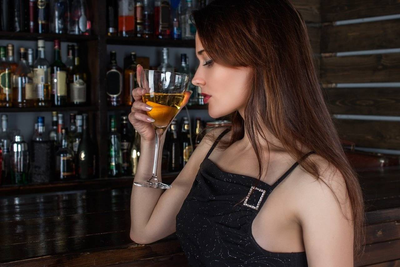Pricing Liquor- What's it about?
Liquor pricing can be terribly confusing for both customers and retailers. Liquor stores are often required to have a minimum advertised price, but the retailer is free to charge any price below that. To help you understand it better, let's break down the basics of liquor pricing.
Your Complete Guide to Pricing Liquor For a Bar or Nightclub
The Art and Science of Pricing Liquor
One of the most difficult aspects of running a bar is pricing liquor for the menu. No matter what you're selling, you'll always have some customers willing to pay more, and some who want to pay less for your product. A bar owner would say the most difficult part of their job is having the right pricing skills to compete in the market.
If you're a new bar owner you may find yourself wondering how to price drinks at your bar. To answer this, we first need to explore the different factors that determine the drink price at a bar. The primary factors that drive liquor pricing are type of liquor, volume, location and establishment type.
Liquor pricing is calculated after considering liquor cost or pour cost, as well as other factors such as establishment cost, industry standards, and customer profile. The kind of crowd your bar gets and your competitors' drink price are important factors that cannot be overlooked when deciding liquor pricing and benchmarking a profit margin for sales. If done right, the bar profit margin is usually at least 10-15% higher than the margin on food. It is therefore imperative for a bar owner to hit the right liquor pricing to reap good returns in the hospitality industry.
bartender training
- Liquor type
- Volume
- Location
- Establishment type
How Pricing Liquor Affects Your Bottomline
As a bar owner you may struggle to arrive at the right drink price. You won't want to get this wrong, because liquor prices are the chief determinant of the profit margin for a bar. If you price drinks at rock-bottom rates that don't meet your pour cost (we'll come to this in a bit), you'll be incurring losses from the get go. You'll also have customers wondering why the liquor is so cheap. If they're start to doubt the quality of the drink, you'll run out of business. Conversely, if you settle on a steep retail price for your drinks, you run the risk of driving away customers. It is therefore crucial to strike a balance, and find the right drink price that works for you as a bar owner.
The price of liquor varies widely, depending on type, variant, brand, and so on. The first thing you'll want to consider is the type of liquor you're purchasing and serving. Some liquor, such as whiskey or vodka, may have a small price differential. However, wine and beer can differ vastly in terms of drink price. Wine has a cost per glass, as well as a cost per bottle on the menu. Beer on the other hand, has a cost per glass, as well as bottle, pitcher, and keg pricing systems. With drink cost so markedly different for different drinks, it is essential for bar owners to engineer their drinks menu after much thought. Liquor pricing drives sales and profit margin like nothing else on the menu.
Social Media

Liquor pricing is complicated business. It can make or break your bar.
Master the science of pricing liquor so you can take your bar to the next level.
What's Pour Cost and What Does it Have to do With Pricing Liquor?

Pour cost is the primary determinant of liquor pricing; it is also referred to as liquor cost. Pour cost is the percentage of the cost incurred by a bar to make a drink, divided by the price of the drink on the menu. The drink cost incurred by the bar includes the liquor price, along with the price of other ingredients such as garnishing, mixers, etc. It's standard practice among bar owners to maintain a 20-25% pour cost for most drinks. When a drink has a 20% pour cost, it implies that the drink will have a profit margin of 80%.
However, wine, liquor, beer, cocktails and other drinks all have different percentages of pour cost. There's no one formula that fits all. For some, it's just the bottle price that determines the pour cost. For others, pour cost includes the cost of mixers, and other ingredients as well.
As pour size changes according to occasion or daily specials, bar owners play around with the cost percentage while attempting to maintain a decent margin. If there's a happy hour or a special event, the drink price and profit margin goes down. The wholesale price of liquor also determines the pour cost, and the drink price may change accordingly. Pour cost is clearly one of the most important methods of calculating sales and the profit margin for a bar.
The Preferred Formula for Pricing Liquor
The most popular liquor pricing method is to first calculate the pour cost per drink. The pour cost includes not just the wholesale liquor price, but also other factors such as ingredients used, garnishing cost, etc. Pour cost is the percentage calculated by dividing the cost price of a drink by its selling price. The pour cost thus shows how much a bar is spending and profiting on a particular drink.
Formula
For simple drinks that can be poured and served, the formula is simple- Pour cost = Wholesale price of bottle / Retail price * 100
However, for other drinks that call for the mixing of various ingredients, the formula is different. The pour cost for cocktails, etc. needs to factor in the cost of ingredients along with the wholesale price of the bottle.
With these formulas, a bar manager can decide the drink price. Usually, the pour cost is about 20% of the drink price. This gives the bar an 80% profit margin. However, the percentage and pour cost must be decided on individual drink basis, as per the bar's needs, location, and demand.
Restaurant Menu
3 Factors to Consider When Pricing Liquor

As a bar owner, you must consider three key factors before finalizing the liquor pricing for your establishment. With the right menu and right drink price a bar can grow by leaps and drive huge profits.
Demand
If your draft beer and craft beer are flying off the shelves in comparison to other bars in the vicinity, maybe your craft has hit the right note with customers. However, it could also be that your drink cost is too low and is therefore a hit. In that case, you may want to increase your drink price, but not to the point where you lose customers. Keeping an eye on the kind of demand you see as a bar owner is crucial in determining the drink price on your menu.
Competition
Any business launching a new product always conducts a market survey to know how the competition has priced similar products. Similarly, a bar owner must know if the nearest pub is selling liquor at a lower drink cost and threatening to steal customers. Most bars have competitive prices within the same range, while upscale establishments can afford to have higher liquor pricing irrespective of the competition.
Location and demographics
A bar's location and client base are also important factors that drive liquor pricing. You cannot have steep prices in a neighborhood when others are serving a large pour size at lower rates. As a bar owner you need to regulate your profit margin, even as you factor in the pour cost and cost percentage when deciding the drink cost for each item.
- A survey by the International Wines and Spirits Record (IWSR) found liquor sales were up in 2020 by 4.6%, beating the previous years' trends.
- Increased consumption has been linked to the Covid-19 pandemic.
- 2021 is projected to end on an even higher note, with a 3.8% increase in liquor sales volume.

You want to make the most profit possible, but you’re not sure how to price your drinks.
Take the guesswork out of liquor pricing with the right formula. Do you know what it is?
Liquor Pricing Strategy- One Size Does Not Fit All

A good liquor pricing strategy is one that understands one size doesn't fit all when it comes to alcohol. The cost per ounce is different for spirits, just as the cost per pour is different for draft beer and wine. There is a fixed method in liquor pricing that is followed by bars and restaurants to engineer the right menu.
Four-tier drink pricing method
Well
This is the category in which a bar owner can list their cheapest house liquors that can be mixed with other drinks. These also have the highest pour cost in a baras much as 30%.
Call
Every bar or restaurant has a few drinks that are most popular with their customers. This is the category in which you can segregate these popular choices. These drinks have a pour cost of around 25%.
Premium
With a pour cost of 20%, these liquors are some of the most expensive and highest quality drinks offered by brands. These are also easy to locate in a bar.
Super-premium
These are top-of-the-shelf, highest quality liquor on offer at a bar, and have a pour cost of around 15%. These are typically drinks that have aged over time.
What is Psychological Liquor Pricing?
Psychological pricing is a liquor pricing strategy that is driven by the psychological impact of prices on the minds of customers. It is important for bar owners to have an attractive drink price in order to drive sales and grow the customer base. For example, when a drink is priced $9.99, it immediately becomes more attractive to a customer when compared to $10, although there's hardly a difference in the pour cost for the bar. This is how psychological liquor pricing determines the drink price in a bar.
Psychological liquor pricing is a strategy that uses human psychology to influence consumers' perceptions of the drink price, and the value and quality of the product. The psychological liquor pricing strategy is based on the idea that consumers use drink price as a shortcut to interpret product attributes. This liquor pricing strategy is most often used when the drink price is expensive and the customer typically pays at the time of purchase.

Competition driving down your liquor profits?
Don't let the bar next door dictate your profit margins. Get strategic with your liquor pricing.

